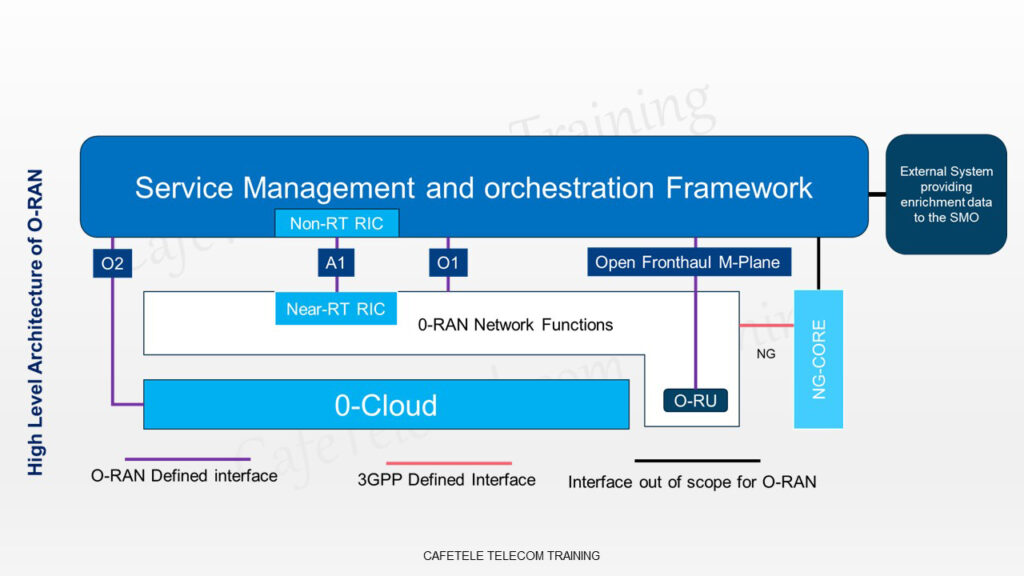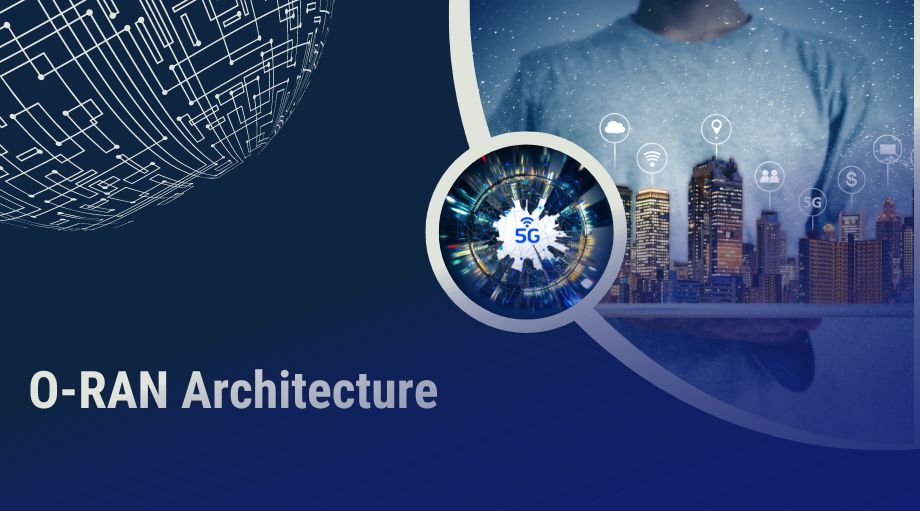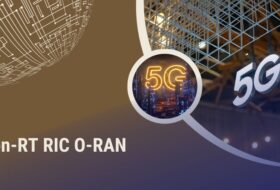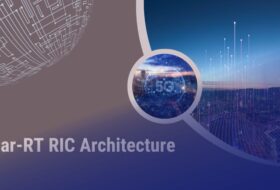O-RAN Architecture Principle
The O-RAN architecture and interface specifications shall be consistent with the 3GPP architecture and interface specifications to the extent possible.
The architecture shows that the four key interfaces – namely, A1, O1, Open Fronthaul M-plane & O2– connect SMO (Service Management and Orchestration)framework to O-RAN network functions and O-Cloud. Above figure also illustrates that the O-RAN network functions can be VNFs (Virtualized Network Function), i.e., VMs or Containers, sitting above the O-Cloud and/or PNFs (Physical Network Function) utilizing customized hardware. All O-RAN network functions are expected to support the O1 interface when interfacing the SMO framework.
The Open Fronthaul M-plane interface, between SMO and O-RU, is to support the O-RU management in hybrid mode. The O-RU termination of the O1 interface towards the SMO . The management architecture of the flat mode [14] and its relation to O1 interface for the O-RU is a subject for future study.

Definition of O-RAN in architecture
- Near-RT RIC: O-RAN Near-Real-Time RAN Intelligent Controller: A logical function that enables near-real-time control and optimization of RAN elements and resources via fine-grained data collection and actions over E2 interface. It may include AI/ML workflow including model training, inference and updates.
- Non-RT RIC: O-RAN Non-Real-Time RAN Intelligent Controller: A logical function within SMO that drives the content carried across the A1 interface. It is comprised of the Non-RT RIC Framework and the Non-RT RIC Applications (rApps) whose functions are defined below.
- Non-RT RIC Applications (rApps): Modular applications that leverage the functionality exposed via the Non-RT RIC Framework’s R1 interface to provide added value services relative to RAN operation, such as driving the A1 interface, recommending values and actions that may be subsequently applied over the O1/O2 interface and generating “enrichment information” for the use of other rApps. The rApp functionality within the Non-RT RIC enables non-real-time control and optimization of RAN elements and resources and policy-based guidance to the applications/features in Near-RT RIC.
- Non-RT RIC Framework: That functionality internal to the SMO that logically terminates the A1 interface to the Near-RT RIC and exposes to rApps, via its R1 interface, the set of internal SMO services needed for their runtime processing. The Non-RT RIC Framework functionality within the Non-RT RIC provides AI/ML workflow including model training, inference and updates needed for rApps. Please refer to [19] for more information.
- O-Cloud: O-Cloud is a cloud computing platform comprising a collection of physical infrastructure nodes that meet O-RAN requirements to host the relevant O-RAN functions (such as Near-RT RIC, O-CU-CP, O-CU-UP, and O-DU), the supporting software components (such as Operating System, Virtual Machine Monitor, Container Runtime, etc.) and the appropriate management and orchestration functions.
- O-CU-CP: O-RAN Central Unit – Control Plane: a logical node hosting the RRC and the control-plane part of the PDCP protocol.
- O-CU-UP: O-RAN Central Unit – User Plane: a logical node hosting the user-plane part of the PDCP protocol and the SDAP protocol.
- O-DU: O-RAN Distributed Unit: a logical node hosting RLC/MAC/High-PHY layers based on a lower layer functional split.
- O-RU: O-RAN Radio Unit: a logical node hosting Low-PHY layer and RF processing based on a lower layer functional split. This is similar to 3GPP’s “TRP” or “RRH” but more specific in including the Low-PHY layer (FFT/iFFT, PRACH extraction).
- O1: Interface between SMO framework as specified in Section 4.3.1 and O-RAN managed elements, for operation and management, by which FCAPS management, PNF (Physical Network Function) software management, File management shall be achieved.
- O2: Interface between SMO framework as specified in Section 4.3.1 and the O-Cloud for supporting O-RAN virtual network functions.
- Open FH M-Plane: Management interface controlling the O-RU, generally driven from the O-DU but in the case of the hybrid topology also driven from the SMO.
- SMO: A Service Management and Orchestration system
- xApp: An application designed to run on the near-RT RIC. Such an application is likely to consist of one or more microservices and at the point of on-boarding will identify which data it consumes and which data it provides. The application is independent of the near-RT RIC and may be provided by any third party. The E2 enables a direct association between the xApp and the RAN functionality
Service Management and Orchestration (SMO)
In a Service Provider’s Network, there can be many management domains such as RAN management, Core Management, Transport Management, End to End Slice Management etc. In the O-RAN architecture, SMO is responsible for RAN domain management. The SMO description in this architecture document is focused on the SMO services that support the RAN. The key capabilities of the SMO that provide RAN support in O-RAN are:
- FCAPS interface to O-RAN Network Functions
- Non-RT RIC for RAN optimization
- O-Cloud Management, Orchestration and Workflow Management
The SMO performs these services through four key interfaces to the O-RAN Elements.
- A1 Interface between the Non-RT RIC in the SMO and the Near-RT RIC for RAN Optimization.
- O1 Interface between the SMO and the O-RAN Network Functions for FCAPS support.
- In the hybrid model, Open Fronthaul M-plane interface between SMO and O-RU for FCAPS support.
- O2 Interface between the SMO and the O-Cloud to provide platform resources and workload management.



